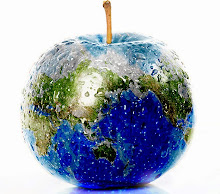Wednesday, 28 March and Thursday, 29 March, 2007


This is HL #3. Be sure to head your paper properly (upper left, last name, first name, ID number, block, date, HL#3, and write answers only.


Be sure to follow the rubrics exacly. The story is due on your return to class.


These are the instructions for written report 4. Be sure to follow them and use the check-off list!

Advanced science classes, this is the sheet you will use to classify your organisms. Use pencil.

All general science classes, this is the sheet you will use to classify your organisms. Use pencil.
Using information from internet access, and classroom discussions:
Students should be able to:
-illustrate how living things depend on their environment.
Our do-now was to begin planning the technology presentation for the quarter. Students are to design a music video, using either their own created music with GarageBand or parodying other music, about biodiversity and how living things interact with their environment. They will be taking pictures and video footage, in addition to pictures obtained from user-free sites on the internet.
Students received their short story 4 directions, as well as directions for written report 4. Remember, help for written report 4 can be found at: geocities.com/DrGCDMS just scroll to the bottom of the page and click the written report link. Then, scroll down and click the link for the treasure hunt. Follow the resulting links to information about the organisms.
Remember, you also have home learning 3 to turn in!
Students used the remainder of the block to work on their presentations.
Home learning 3, short story 4, and written report 4 can be found at the top of this blog.

















